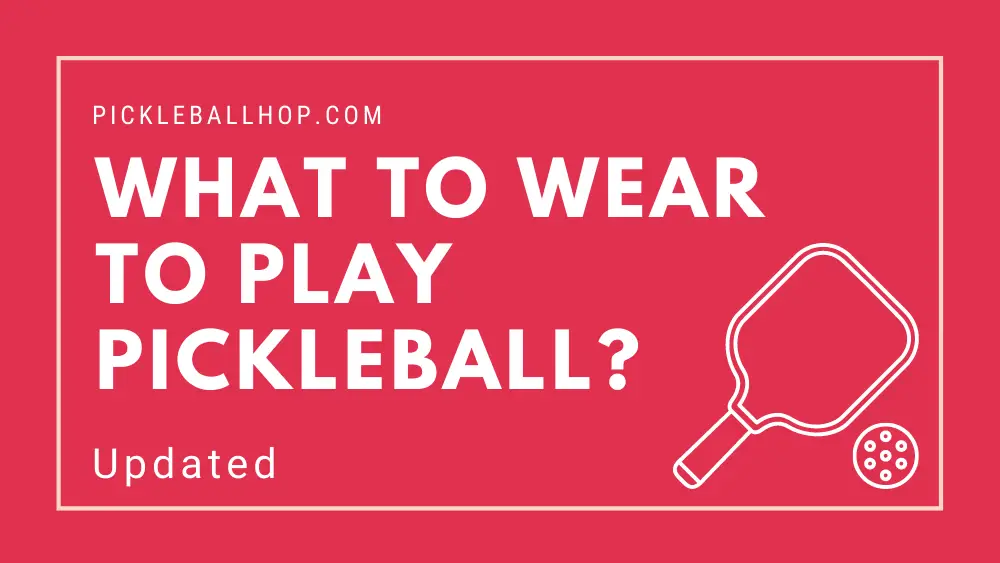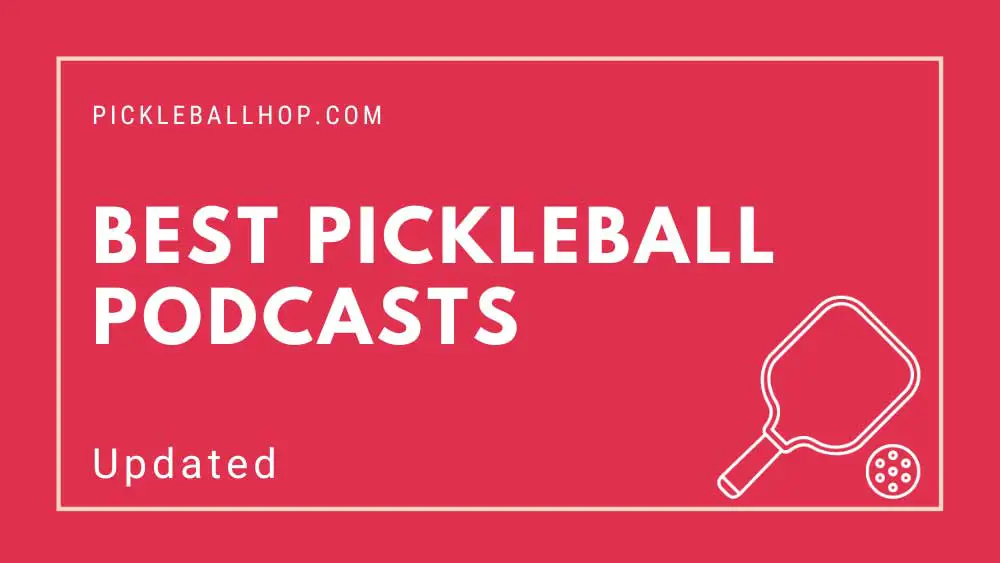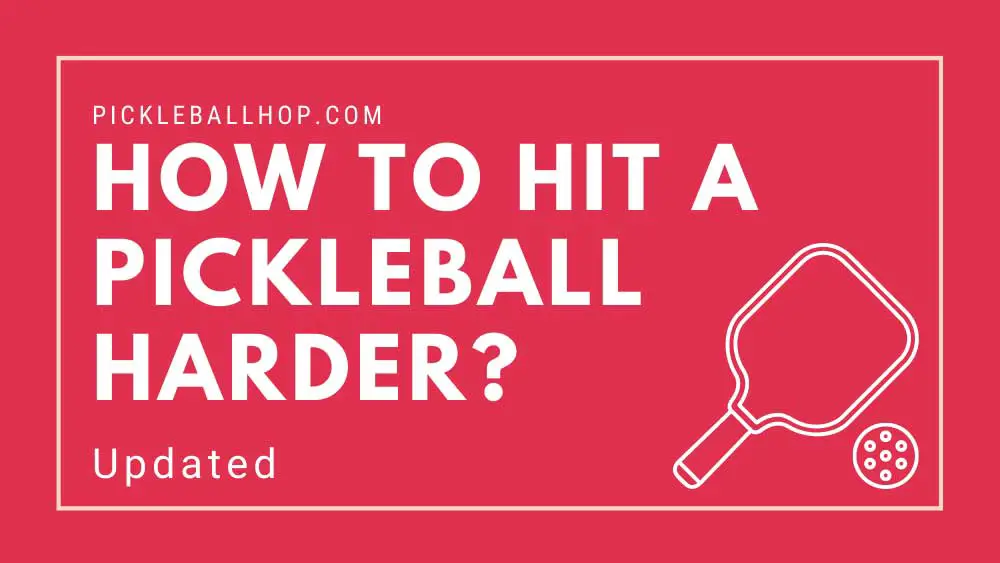The terminology used in Pickleball is funny. The best example is “Dink”.
Pickleball’s dink has been the punchline of countless pickleball stories and has inspired dozens of campy t-shirts. But what is a dink?
This finesse shot lands in your opponent’s No Volley Zone just over the net, on an upward trajectory. Your opponent may have to move away from your position if you use a Dink. When facing a player whose speed or strength is greater, being able to hit a good dink shot can equalize the playing field.
You may enjoy reading Best Lightweight Pickleball Paddles
So how do you hit a good dink shot?
Bend Your Knees – When you bend your knees you can hit a dink much more easily. The ball must be positioned under your feet when you hit it. The ball should be lifted with your knees. You can also exercise your thighs and calves while playing. By simply using your shoulder muscles, move the paddle using your wrists and forearms.
Continental Grip – This grip is inspired by tennis. As you grasp the paddle, imagine you’re shaking someone’s hand. Your index finger and heel pad of your hand should touch the handle.
Tennis players often refer to the continental as “the chopper” because it resembles an ax handle. This grip is designed to be used when you are hitting low or underhanded balls. That’s how you should hit a dink – underhanded.
A light grip is also important. Softening the bounce of the ball will occur when you hold the paddle gently and absorb some of the ball’s energy.
Forehand or backhand, you can use this grip. This grip style has the disadvantage of being harder to hit with spin.
Find a Consistent Stroke– Use a low underhanded stroke when you dink. Once the ball has bounced, reached its apex, and started to fall, hit it. To hit dinks consistently, you need a steady stroke. You should practice dinking regularly. This section describes how to practice hitting dinks.
Players who hit hard do well with dinks. Plays who are faster or stronger than you can be beaten if you have good finesse. Suddenly, things slow down and they’re forced out of their fast-paced, hard-hitting rhythm.
An “Up” dink is designed so that it lands in the “No Volley Zone,” or “Kitchen.” This forces your opponent to pay attention to their footwork. When they step into the kitchen to hit the ball, they should ensure that the ball does not bounce. When they step back out of the kitchen, they have to focus on the next shot.
A hard return shot can’t be made by your opponent if the ball lands in the kitchen. Trying to do so will either cause the ball to sail over the baseline out of bounds, or direct the ball straight into the net.
Net Clearance – An excellent dink just goes over the net. Unfortunately, such accuracy is difficult to achieve consistently.
Strike the net at a good distance rather than close to it. Allow yourself some room for error. Wait for your opponent to make errors.
You may enjoy reading Best Quiet Pickleball Paddles
The Cross-Court Dink
When you cross court dink, you have more length to work with because the ball travels a longer distance, giving you more time to drop. Consequently, if the ball is hit high, you have a wider margin for error.
Hitting cross-court can draw your partner towards the net when you’re playing doubles. If you get your opponents out of position, you can set up other shots, like lobs to the back of the court or slams to your opponent’s feet.
How to Practice Dinks
Finding a partner and striking dinks back and forth over the net to each other is the best way to practice dinks. When you and your partner are both on the same side, practice hitting the ball to your partner as well as hitting the ball across the court to your opponent.
Each of you should stand on the opposite side of the net just outside the kitchen.
Practice stepping into the kitchen after the ball bounces to return it after standing outside the kitchen. When you’re finished shooting, step outside again.
It is even better if you can practice with four people. Hits are exchanged in a figure-8 pattern between the four players. Following that, everyone should practice hitting dinks over the net and across the court.
Don’t forget to bend your knees. Hit the ball once it has bounced, topped off, and started to fall. Ensure that the ball is struck upwards so that it makes a gentle arc over the net.
You may enjoy reading Best Gamma Pickleball Paddles
How to Hit Dinks Like a Pro?
Tip #1: Don’t hit the dink before the ball has bounced a second time. With extra time, you can assess your opponent’s position and get into position.
Tip #2: Dunking and dropping are different shots, but they are often confused. Drop shots are similar to dinks, but they are shot from behind the court. You can improve your game by learning both shots.
Tip #3: In pickleball, dinks rarely result in a winning shot. Rather, they prepare you to score. You might be able to take advantage of this weakness by forcing your opponent to hit the ball at an awkward angle.
To pull off the dink shot, you have to wear down your opponent and force them to make a mistake, and that requires rhythm and patience. Well-placed dinks also prevent power hits from returning. When you return the ball with precision, you are controlling the game. Aim for your opponent’s feet and you will control the game.
Tip #4: When you duck, you must do so softly so that the ball does not pop up too high and you do not get attacked by your opponent. Avoid rushing when practicing dink shots. The soft game will become second nature to you once you master it.
Tip #5: Don’t rush things. To use a dink shot, you need to be patient and steady, and then make your shot. There are many reasons why seniors are able to outperform younger players. Pickleball is the sport of the thinking man.
Conclusion
That’s all there is to it! We talked about what a dink is, how it is unique to pickleball, and how you can best utilize it in your play. Feel free to ask any questions or let us know if we missed anything.
Practice dink drills without hesitation. Pickleball is often more enjoyable than drills for me. It is worth practicing these finer points if you are competitive in any way. Your game will greatly improve!
You may enjoy reading Best Pickleball Paddle for Spin



